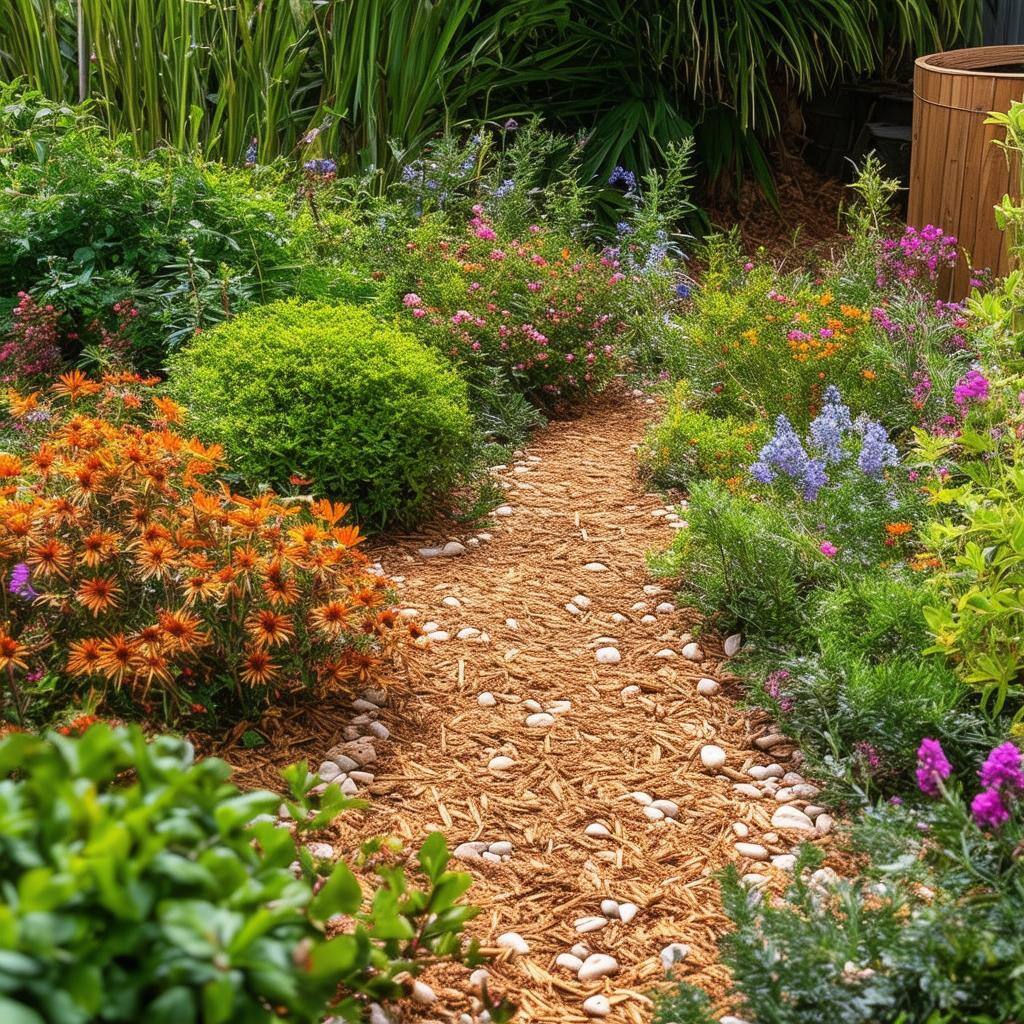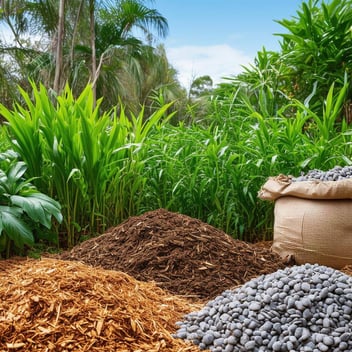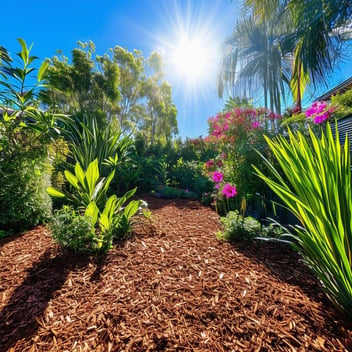How Mulch Saves Water in South East Queensland Gardens
Introduction
In the sun-drenched landscapes of South East Queensland (SEQ), water is a precious commodity. Gardeners face the dual challenge of maintaining lush, vibrant gardens while adhering to water conservation principles. One effective strategy to achieve this balance is mulching—a practice that not only enhances plant health but also significantly reduces water usage.
Understanding Mulch and Its Types
Definition and Purpose of Mulch
Mulch refers to a layer of material applied to the soil surface, serving multiple functions: conserving moisture, improving fertility, and suppressing weeds. By acting as a protective barrier, mulch mitigates the direct impact of environmental factors on the soil.
Common Organic Mulches: Sugar Cane, Grass Clippings, Leaves, Pine Bark
Organic mulches, derived from natural sources, are widely favored in SEQ gardens. Materials such as sugar cane mulch, grass clippings, leaves, and pine bark not only cover the soil but also decompose over time, enriching it with essential nutrients.
Inorganic Mulches: Gravel, Pebbles, Landscape Fabrics
Inorganic mulches, including gravel, pebbles, and landscape fabrics, offer durability and low maintenance. While they do not contribute organic matter to the soil, they effectively suppress weeds and reduce evaporation.
Mechanisms of Water Conservation through Mulching
Reduction of Evaporation Rates
Mulch acts as a shield, limiting the exposure of soil to direct sunlight and wind. This barrier significantly curtails the rate of evaporation, ensuring that moisture remains available to plant roots for extended periods.
Improvement of Soil Moisture Retention
By maintaining a consistent soil environment, mulch enhances the soil's ability to retain moisture. This is particularly beneficial during SEQ's dry spells, as it reduces the frequency of irrigation required to keep plants healthy.
Minimization of Soil Erosion and Run-off
Mulch stabilizes the soil surface, preventing erosion caused by heavy rains—a common occurrence in SEQ's subtropical climate. By reducing run-off, mulch ensures that water penetrates the soil effectively, reaching the root zones of plants.
Benefits of Organic Mulches in SEQ's Climate
Soil Enrichment through Decomposition
As organic mulches break down, they add valuable organic matter to the soil, enhancing its structure and nutrient content. This process fosters a healthier root environment, promoting robust plant growth.
Enhanced Water Infiltration and Retention
The decomposition of organic mulches improves soil porosity, allowing for better water infiltration. This means that during rainfall or irrigation, water is more readily absorbed and retained, reducing wastage.
Temperature Regulation for Optimal Plant Health
Mulch moderates soil temperatures by insulating against extreme heat. This temperature regulation is crucial for maintaining root health and ensuring efficient water uptake by plants.
Implementing Mulching Practices for Water Conservation
Selecting Appropriate Mulch Materials
Choosing the right mulch is essential. Organic options like sugar cane mulch are particularly suited to SEQ gardens due to their availability and beneficial properties. It's important to select mulch that complements the specific needs of your plants and soil.
Optimal Mulch Application Depth and Coverage
Applying mulch to a depth of 5 to 10 centimeters is generally recommended. This thickness is sufficient to suppress weeds and conserve moisture without impeding air circulation to the soil. Ensure the mulch is spread evenly, leaving space around plant stems to prevent rot.
Timing and Frequency of Mulch Application
Mulching is best done in autumn and spring, aligning with SEQ's climatic patterns. Regular replenishment is necessary, especially for organic mulches that decompose over time, to maintain their effectiveness in water conservation.
Case Studies: Mulching Success in SEQ Gardens
Community Initiatives Promoting Mulching Practices
In South East Queensland (SEQ), community-driven projects have demonstrated the efficacy of mulching in water conservation. For instance, the Northey Street City Farm in Windsor faced challenges with excessive mulch stockpiles and nutrient runoff into Enoggera Creek. In response, a collaborative effort led to the construction of a dedicated mulch bay surrounded by a vegetated swale. This design not only managed mulch storage effectively but also filtered excess nutrients, preventing waterway contamination. Such initiatives highlight the role of mulching in sustainable urban design and water management.
Conclusion
Mulching serves as a vital practice for water conservation in SEQ gardens. By reducing evaporation, enhancing soil moisture retention, and preventing erosion, mulch contributes significantly to sustainable gardening. Implementing appropriate mulching techniques, as evidenced by community projects like Northey Street City Farm, enables gardeners to maintain vibrant landscapes while conserving water—a precious resource in the region.




